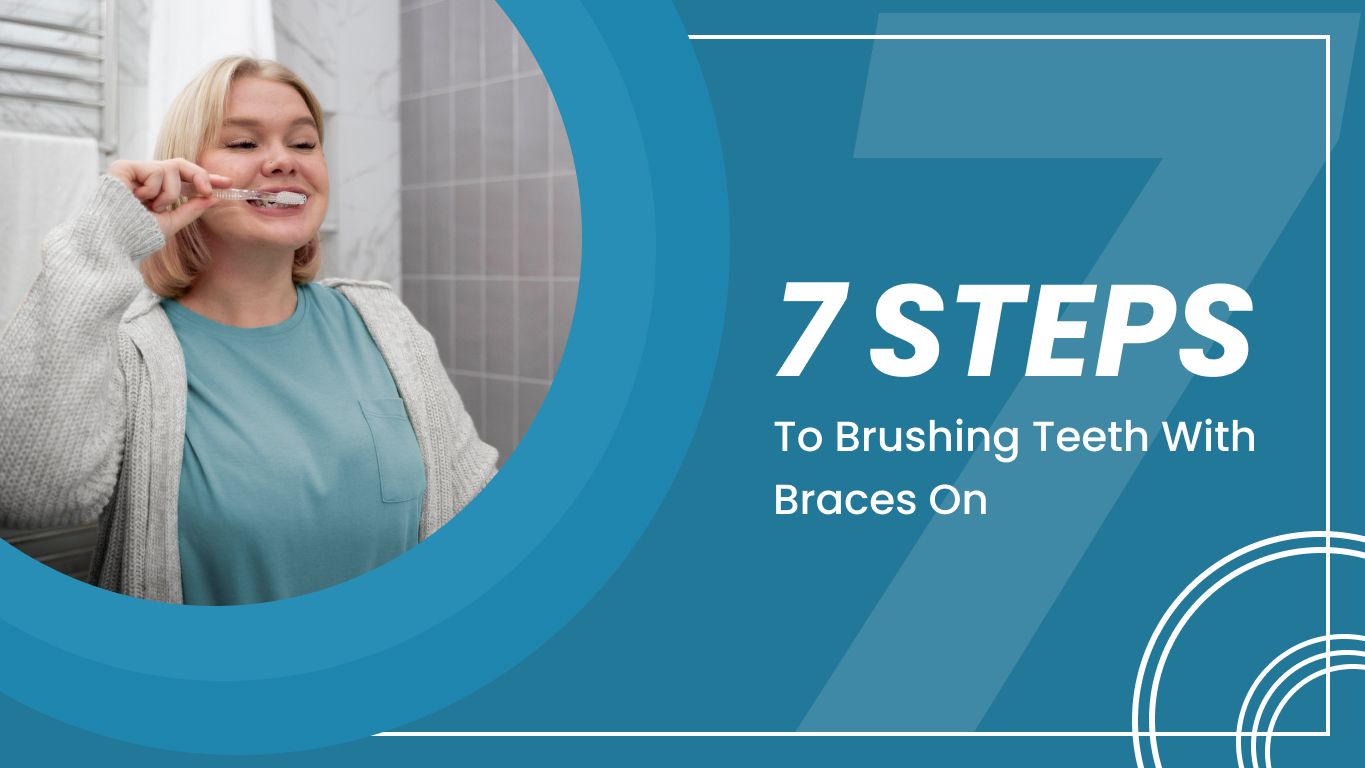Receiving braces marks an exciting milestone on your journey to a perfect smile, though it brings additional responsibilities for preserving optimal oral health. Learning how to brush teeth with braces properly becomes even more critical when you have braces, as food particles and plaque can easily become trapped around brackets, wires, and bands. Without proper care, this can lead to tooth decay, gum disease, and even permanent staining around your braces.
The good news is that with the proper technique and extra time, you can keep your teeth and gums healthy throughout your orthodontic treatment. Follow these seven steps to ensure your smile stays bright and healthy while your braces work magic.
Step 1: Rinse Before You Begin
Begin your dental hygiene with braces routine by thoroughly rinsing your mouth with water before you grab your toothbrush. This initial rinse helps dislodge loose food particles and debris that may be stuck around your braces. Swish the water vigorously around your mouth for about 30 seconds, particularly in areas around brackets and wires. This preliminary step makes the brushing process more effective by removing the larger particles that could interfere with your toothbrush’s ability to clean properly.
Step 2: Choose the Right Tools
Having the proper equipment makes all the difference when brushing with braces. Use a soft-bristled toothbrush with a small head that can easily maneuver around your brackets and wires. An electric toothbrush can be particularly effective, as the oscillating motion helps remove plaque more efficiently than manual brushing. Additionally, consider using a specialized orthodontic toothbrush, which features V-shaped bristles explicitly designed for cleaning around braces. Always include fluoride toothpaste in your routine to strengthen teeth and guard against cavity formation.
Step 3: Position Your Toothbrush at the Right Angle
Proper toothbrush positioning is crucial for effective cleaning. Position your toothbrush at a 45-degree angle against your gum line, ensuring the bristles are directed toward your gums. This angle allows the bristles to clean the tooth surface and the area where your teeth meet your gums. For areas surrounding your brackets, tilt the brush to allow bristles to reach beneath the wires and around each bracket. You may need to adjust the angle frequently as you move around your mouth to ensure thorough cleaning.
Step 4: Use Gentle, Systematic Brushing Motions
Begin brushing with gentle, circular motions rather than aggressive back-and-forth scrubbing. Start with the outer surfaces of your upper teeth, working systematically from one side of your mouth to the other. Dedicate additional time to each bracket, thoroughly cleaning above, below, and surrounding every component. Work methodically and patiently, allowing each tooth and bracket section approximately 10 seconds of focused cleaning. The key is to be thorough rather than rushed — taking your time ensures you don’t miss any spots where plaque and bacteria can accumulate.
Step 5: Clean All Tooth Surfaces Thoroughly
After cleaning the outer surfaces, move to the inner surfaces of your teeth, using the same gentle circular motions. These areas are often neglected but are just as essential for maintaining oral health. Focus particularly on the inner surfaces of your bottom front teeth, which tend to collect plaque rapidly. Then, address the chewing surfaces of your back teeth with gentle back-and-forth movements. Don’t forget to brush your tongue gently to remove bacteria and freshen your breath.
Step 6: Focus on Problem Areas
Certain areas require extra attention when you have braces. The spaces between your brackets and gum line are particularly prone to plaque buildup, so spend additional time in these areas. The areas around bands (if you have them) and behind your wires also need special care. If you notice any bleeding while brushing these areas, don’t stop — gentle, consistent cleaning will help improve your gum health. Should bleeding continue or become worse, reach out to your orthodontist or dental professional.
Step 7: Complete Your Routine with Additional Tools
After thorough brushing, enhance your cleaning routine with specialized tools designed for braces. Use an interdental brush or a water flosser to clean between teeth and around brackets where your regular toothbrush can’t reach effectively. Thread floss carefully under your wires using a floss threader or orthodontic floss with a stiff end that makes threading easier. Complete your routine with an antimicrobial rinse to eliminate bacteria and reduce gum inflammation. This comprehensive approach ensures you’ve addressed all the nooks and crannies where problems can develop.
Additional Tips for Success
Remember that brushing with braces takes longer than usual — plan for at least three to four minutes per session. Make sure to brush following each meal and snack to avoid food particles remaining around your orthodontic appliances. Carry a travel toothbrush and toothpaste when you’re away from home. Regular dental checkups become even more important during orthodontic treatment, so don’t skip your scheduled cleanings and examinations.
Maintain Your Beautiful Smile at Carrum Downs Dental
Following these seven steps consistently will help ensure that when your braces come off, you’ll reveal not just straight teeth, but healthy, cavity-free teeth that will last a lifetime. Proper oral hygiene during orthodontic treatment is an investment in your long-term dental health.
At Carrum Downs Dental, located at Shop T5, 100 Hall Road, Carrum Downs, our experienced team supports you throughout your orthodontic journey. We understand the unique challenges of maintaining oral health with braces and provide comprehensive care to help you achieve optimal results. Our clinic is open seven days a week from 9 AM to 5 PM, making it convenient for you to schedule regular checkups and cleanings that fit your busy schedule. Reach out to us today to keep your smile healthy and radiant during your orthodontic journey.
Related Post –
Things You Should Know Before Getting Invisible Braces
Is It Possible to Straighten Your Teeth Without Braces?

